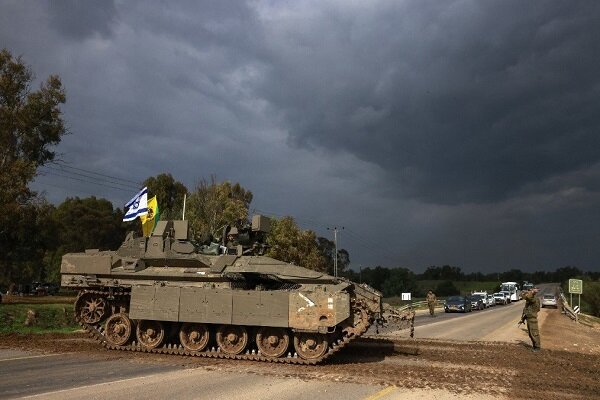From Netzarim to Morag; Is Israel seeking to occupy Gaza?
Since the first days of this month (April), the 36th Division of the Israeli army began the process of occupying the Morag Corridor to separate the Rafah and Khan Yunis crossings and completed it on April 12. According to Hebrew sources, the Israeli army intends to complete the siege of Rafah, turning the only route of communication between the people of Gaza and the world into a secure and uninhabited area.
Previously, the Israeli army tried to prevent the supply of weapons to the resistance by occupying the Philadelphia Axis, and at the same time, by creating the Netzarim Axis, it prepared the ground for the separation of the north and south of Gaza from each other. Experts believe that Netanyahu intends to go beyond international law and move in line with ultra-Orthodox forces such as Itamar Ben-Gwer or Bezalel Smotrich towards the option of illegally annexing Gaza in the first step and then annexing the West Bank.
What is the Morag Corridor?
The Morag Corridor is a strategic area in the Gaza Strip that serves as a vital communication axis between the cities of Khan Yunis in central Gaza and Rafah in the south of the region. The corridor is located near the Israeli settlement of Morag (which existed before the evacuation of Israeli settlements in Gaza in 2005). Geographically, this axis is a key route for traffic, goods transportation, and communications between the southern and central parts of Gaza.
The occupation of this axis by the 36th Division of the Israeli army from April 2 to 12 means the severance of land communication between Khan Yunis and Rafah, which could have serious effects on the daily lives of the people and the activities of the Palestinian resistance. Due to its proximity to the Gaza borders and its strategic location, this area has always been of interest to the Zionist forces, as its control allows them to restrict Palestinian movements and exert military and economic pressure on the Gaza Strip. This move by Tel Aviv also reflects an attempt to divide the Gaza Strip into separate sectors to facilitate military and security control over the area. Such a strategy has a long history in Tel Aviv’s policies and aims to undermine the geographical and social integrity of the Palestinians in Gaza.
The occupation of the Morag Corridor by the Israeli army poses several risks for the Palestinian people and the Hamas movement. For ordinary people, this action means cutting off the connection between Khan Yunis and Rafah, which could disrupt access to basic services such as hospitals, schools, and markets. Many Palestinian families in these areas are interdependent, and this isolation could create profound social and economic problems.
In addition, cutting off the connection to the Rafah crossing could make it difficult for humanitarian aid, food, and medicine to enter, while Gaza is already under a severe blockade. This situation could exacerbate the humanitarian crisis in southern Gaza and increase the psychological and physical strain on the residents of the area. On the other hand, for Hamas and other resistance groups, the occupation of this corridor means severe restrictions on military and logistical movements. This axis is vital for the transfer of equipment, forces, and communications between different parts of Gaza, and its interruption could affect Hamas’s ability to coordinate resistance operations. The Israeli regime’s move could also be seen as a prelude to a broader military operation in southern Gaza, especially in Rafah, which is an important base for the resistance.
Is the illegal annexation of Gaza imminent?
With the re-election of Donald Trump as US President, concerns about the formal annexation of the West Bank and the Gaza Strip to the occupied territories of the Zionists, contrary to UN Security Council resolutions, have increased significantly. During Trump’s first term, his policies clearly supported the positions of the Zionist right; Including recognizing Jerusalem as the capital of the Zionist regime, moving the US embassy to the city, annexing the Golan Heights, and presenting a peace plan known as the “Deal of the Century,” which effectively ignored Palestinian rights and facilitated the annexation of large parts of the West Bank to the occupied territories of the Zionists.
This precedent indicates that Trump is likely to adopt a similar approach in the new era and may support Tel Aviv’s actions to formally annex these areas, even if these actions contradict international law and Security Council resolutions (such as Resolutions 242 and 2334) that emphasize the illegality of occupation and annexation.
In recent years, the Zionist regime, especially after the Battle of Al-Aqsa Storm, has adopted more aggressive policies to destroy infrastructure and forcibly displace Palestinians. In Gaza, widespread bombardment and destruction of residential areas, coupled with a severe siege, have made life impossible for residents and forced many to flee their homes. Reports from the United Nations and human rights organizations indicate that more than 70 percent of Gaza’s infrastructure has been destroyed, making the area virtually uninhabitable.

